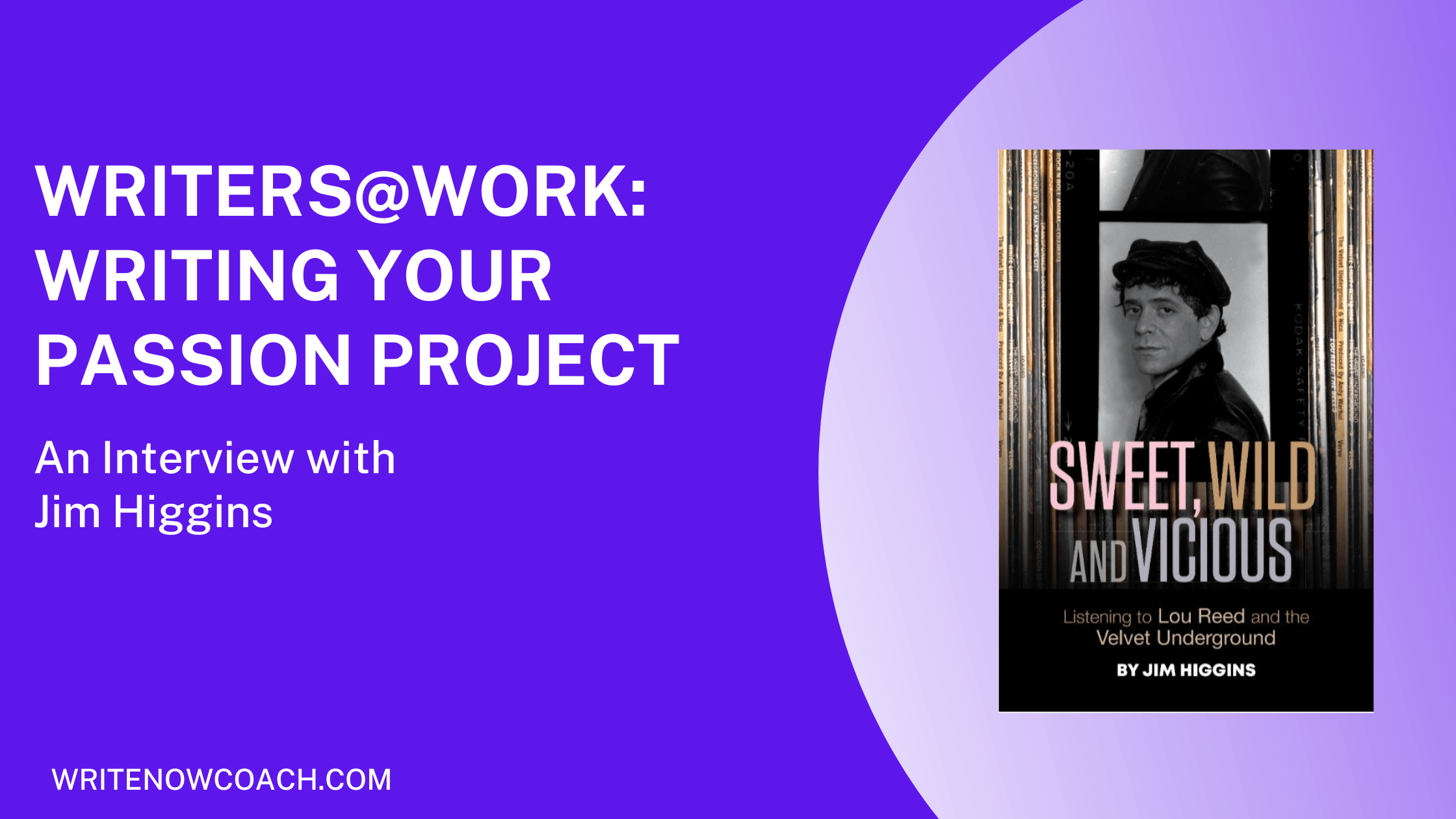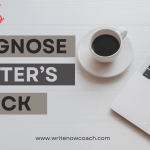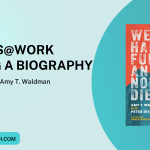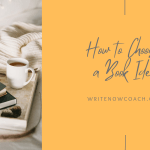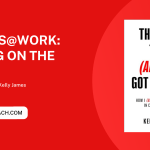Writing Your Passion Project
May 7, 2024
Note From Rochelle
Dear writers,
I am delighted to welcome my friend and colleague Jim Higgins to the blog today! He talks about his journey of writing and publishing his new book, Sweet, Wild and Vicious: Listening to Lou Reed and the Velvet Underground. If you’ve ever had a passion project—a topic that you love and can’t let go of—you’ll want to read about how Higgins turned his idea into a book. You’ll learn a lot about creativity, flexibility, and persistence.
If you’re in the Milwaukee area, Jim Higgins will be speaking at Boswell Book Company this Thursday, May 9, at 6:30 PM. Visit Boswell Book Company to get tickets!
Happy writing,
Rochelle, the Write Now! Coach
Writing Your Passion Project:
An Interview with Jim Higgins
Author of Sweet, Wild and Vicious: Listening to Lou Reed and the Velvet Underground
Can you tell us about Sweet, Wild, and Vicious?

Sweet, Wild and Vicious: Listening to Lou Reed and the Velvet Underground (Trouser Press Books) is an album-by-album guide to nearly 50 albums released by the rock singer, songwriter and icon, and the band that spawned him. Among other topics, in this book I examine how Reed portrayed the world of his patron Andy Warhol and the gender complexities that were part of it; how, during his decades as a solo performer, Reed developed songs he wrote in the Velvet Underground; and how deeply his music reflects the doo-wop and R&B he loved as a youth. My strong interests also include the many songs Reed wrote and performed about drug and alcohol addiction. Countless musicians have written about substance abuse, but I can think of no major artist who has reflected as many facets of that experience as Reed. After each entry on an album, I offer recommended tracks and point readers to other Reed and Velvet Underground albums related to the one just discussed. Also, I suggest playlists of the most compelling music of the Velvet Underground and of each decade of Reed’s solo career.
How did the book come about?
I wrote this book entirely on spec, without any guarantees that a publisher would be interested. In 2013-’14, shortly after Reed’s death, I wrote a blog series where each week I examined one or two of his albums. When that concluded, I thought I was done with the subject. However, a few years later, when posthumous biographies of Reed were published, I read them with great interest. And with great frustration, because I wanted to spend more time with the music itself. I can’t totally fault the biographers. As biographers, their primary job was to document and try to understand his complicated, messy life. But as a fan and reader, I wanted more discussion of the music.
A writer friend encouraged me to write my own. So, I did that thing people are advised to do: I wrote the book I wanted to read. When I started, I told myself I would do it one step at a time, and if no one ever wanted to publish it, I could publish it myself. I started this project before the COVID-19 pandemic arrived. But the first year of the pandemic, when there were no public cultural events to go to, gave me unexpected extra time to work on the book.
What was the process of working on this book like?
My first approach was topical. I did not start wanting to do an album-by-album recap. I wrote about Reed’s music in a series of topical essays: his songs about the world of Andy Warhol, how he portrayed drugs and addiction, the many allusions in his music to songs by other people, his underrated achievements as a guitarist, what we can learn from the albums he made in the last years of his life. I liked what I had written, and my two first readers, one of them a music journalist himself, also liked what I wrote (along with giving me excellent feedback and suggestions).
Now when it came to pitch this book in the publishing world, I started with a couple of drawbacks. I’m just a guy from Milwaukee, not a nationally recognized music writer. And there have been many books about Lou Reed already (though none quite like mine). I queried the kinds of presses that might be interested in a book like the one I wrote, university presses and small presses. In most cases, they wanted to see a query letter, a table of contents and a sample chapter. Sometimes there was also a form to fill out, too. I got some responses of flat-out no, and some kinder ones of we like your writing, but we have to pass. My music journalist friend also connected me with his agent, who specializes in music-related books. The agent read my manuscript. He told me he enjoyed it, but it was not the kind of book he could sell to the publishers he deals with.
At this point, my music journalist friend connected me with Ira Robbins, who was a founder and editor of Trouser Press, an important music magazine that published from 1974-1984. Ira now runs a small publishing house, Trouser Press Books. After an email query from me, Ira asked to read the manuscript. After he did, he told me that he liked the writing and what I had to say, but that my essayish format did not work for him. He only publishes a few books a year, so he wants to publish books he feels have the best chance of success. Now here’s the crucial part: Ira also said that if I would consider revising my work to be an album-by-album book, he would definitely want to see it again and would strongly consider publishing it.
I thought about this. Initially, I did not want to write an album-by-album guide because I thought the work would be thin, just a lot of my reacting to songs one at a time. But after writing the various topical essays, I felt I could approach individual albums in a deeper way, following some of those themes through each of them. Having done the work of version 1.0 gave me confidence I could write in a richer way about individual albums. So, I decided to try it, one album at a time. I was able to use nearly every worthwhile thing I had in the original version in the new version, and the additional parts I had to write to make this work did not seem too onerous. It took about six months. After I finished the second version (and my first readers gave me their feedback), Ira read the book and graciously decided to publish it. He has also turned out to be an excellent and careful editor, with astute questions. I am very pleased to be working with him.
Now I still think my first version was a good, smart, well-written manuscript. But I also understand why publishers would think it would be hard to sell.
I’m always curious about how the work of a journalist makes book writing easier (or harder). What are some of the tools you use to stay focused to write?
Writing this book was a constant weave of listening, reading and writing. In both the first, essayistic version, and the second, album-by-album version, I worked on reasonable-sized chunks one at a time, so I rarely felt overwhelmed by the scale of the work as a whole. (That’s something I learned in part from writing my first book: break a big project into parts or chunks, and work on them one at a time.)
Unlike a fiction writer, who is imagining or inventing, I did not have to create material out of whole cloth. I was responding to music (and related things I read), absorbing it, sifting, and reacting. So, I always had something in front of me I could do. Writing the pieces of this book is similar enough to what I do as a journalist who writes about books and performing arts. But I allowed myself a greater freedom in how I wrote, even permitting myself digressions if I felt they would be entertaining or instructive for the reader. So there was a fun element to writing this book that made me look forward to sitting down and working on it.
While I started writing before the COVID-19 pandemic, the first year of the pandemic, when most events and places were closed, gave me unexpected free time to write. (I had no shows to go to at night.)
I think it helped me to know that no matter what, there were at least a few people who would read what I wrote on this subject. That’s motivating to me.
As far as practical tools go, two online tools I rely on enormously are Dropbox, where I save and store everything, and the Print as PDF option, making it easy to save helpful research info when I found it online.
What are you reading?
Monsters We Have Made by Lindsay Starck, a new novel by a writer born in Milwaukee; The Geography of the Imagination, an essay collection by the late Guy Davenport (which is frequently over my head in terms of erudition, but I enjoy it anyway); and Strike Zone, a Star Trek Next Generation novel by Peter David (going back to boyhood, I have probably read more than 100 Star Trek novels across the whole franchise).
I am rereading Pity the Reader by Kurt Vonnegut and Suzanne McConnell, in which McConnell weaves together many of Vonnegut’s thoughts about writing with anecdotes and lessons of her own.
I have recently read a pair of excellent memoirs, I Heard Her Call My Name: A Memoir of Transition by Lucy Sante, and Lies My Mother Never Told Me: A Memoir by Kaylie Jones; Translation State, an excellent and complex science fiction novel by Ann Leckie; and the biography Radiant: The Life and Line of Keith Haring by Brad Gooch.

About the author: Jim Higgins is arts and books editor for the Milwaukee Journal Sentinel and a former pop music and jazz critic for the Milwaukee Sentinel. He is a two-time winner of Wisconsin Area Music Industry award for music journalist of the year and twice won the Sentinel staff-voted award for humor writing. Like Andy Warhol, he is a native of Pittsburgh. Higgins is also the author of Wisconsin Literary Luminaries: From Laura Ingalls Wilder to Ayad Akhtar (The History Press, 2017).

